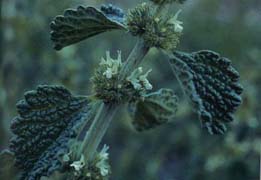Angelica
Family Name: Carrot
Family Name(Latin): Apiaceae
Angelica Archangelica
Common Names: Angelica, archangel, European angelica, garden angelica, masterwort, wild angelica, wild celery, root of the holy ghost (1)
Related Species: Levisticum officinale, Ligusticum Levisticum (2)
Body System Affiliations:
Cardiovasculer System
Respiratory System
Urinary System
Skin
Pancreas (3)
Botanical Description:
Perennial Herb
Size: up to 5' high and 4'-5' wide
Arrangement: Alternate
Leaves: Flat leaves in three central groups broken into another three subdivisions. Leaf edges are finely toothed
Flowers: "The flowers, small and numerous, yellowish or greenish in colour, are grouped into large, globular umbels. They blossom in July..." (4)
Fruits: "...pale yellow, oblong fruits, 1/6 to a 1/4 inch in length when ripe, with membraneous edges, flattened on one side and convex on the other, which bears three prominent ribs. Both the odour and taste of the fruits are pleasantly aromatic." (4)
Roots: "The roots of the Common Angelica are long and spindle-shaped, thick and fleshy - large specimens weighing sometimes as much as three pounds - and are beset with many long, descending rootlets." (4)
Ecology:
Habitat: Moist mountain ravines, meadows, and coastal regions, woodland, dappled shade, shady edge
Range: North America, Europe, and Asia
Native Area: Northern Europe, some botanists think it originated in Syria
Western Uses:
Food: stems and seeds used in confectionary and flavoring (4)
Medicine:
"The root stalks, leaves and fruit possess carminative, stimulant, diaphoretic, stomachic, tonic and expectorant properties, which are strongest in the fruit, though the whole plant has the same virtues. Angelica is a good remedy for colds, coughs, pleurisy, wind, colic, rheumatism and diseases of the urinary organs, though it should not be given to patients who have a tendency towards diabetes, as it causes an increase of sugar in the urine. It is generally used as a stimulating expectorant, combined with other expectorants the action of which is facilitated, and to a large extent diffused, through the whole of the pulmonary region.
It is a useful agent for feverish conditions, acting as a diaphoretic. " (4)
Application: infusion or tincture
Preparation: "An infusion may be made by pouring a pint of boiling water on an ounce of the bruised root, and two tablespoonsful of this should be given three or four times a day, or the powdered root administered in doses of 1O to 30 grains. The infusion will relieve flatulence, and is also of use as a stimulating bronchial tonic, and as an emmenagogue. It is used much on the Continent for indigestion, general debility and chronic bronchitis. For external use, the fresh leaves of the plant are crushed and applied as poultices in lung and chest diseases." (4)
Stems could be chewed to relieve flatulence
The juice of the stems and roots can be used for treatment of chronic rheumatism and gout when dried.
Pharmacy: "Fluid extract, herb: dose, 1 drachm. Fluid extract, root: dose, 1/4 to 1 drachm." (4)
Cautions: not for use if one has diabetes, are using blood thinners, are pregnent or breastfeeding, or a peptic ulcer. Also one should avoid UV rays. (1)
History: "...in early summer-time, it has been the custom among the peasants to march into the towns carrying the Angelica flower-stems and to offer them for sale, chanting some ancient ditty in Lettish words, so antiquated as to be unintelligible even to the singers themselves. The chanted words and the tune are learnt in childhood, and may be attributed to a survival of some Pagan festival with which the plant was originally associated. After the introduction of Christianity, the plant became linked in the popular mind with some archangelic patronage, and associated with the spring-time festival of the Annunciation. According to one legend, Angelica was revealed in a dream by an angel to cure the plague. Another explanation of the name of this plant is that it blooms on the day of Michael the Archangel (May 8, old style), and is on that account a preservative against evil spirits and witchcraft: all parts of the plant were believed efficacious against spells and enchantment. It was held in such esteem that it was called 'The Root of the Holy Ghost.'" (4)
Non-Western uses:
none found
Sources
1. http://hc-sc.gc.ca/dhp-mps/prodnatur/applications/licen-prod/monograph/m... [1]
2. http://www.henriettesherbal.com/eclectic/kings/angelica-arch.html [2]
3. http://www.herbalremediesinfo.com/herbsforspecificbodysystems.html [3]
4. http://www.botanical.com/botanical/mgmh/a/anegl037.html [4]
